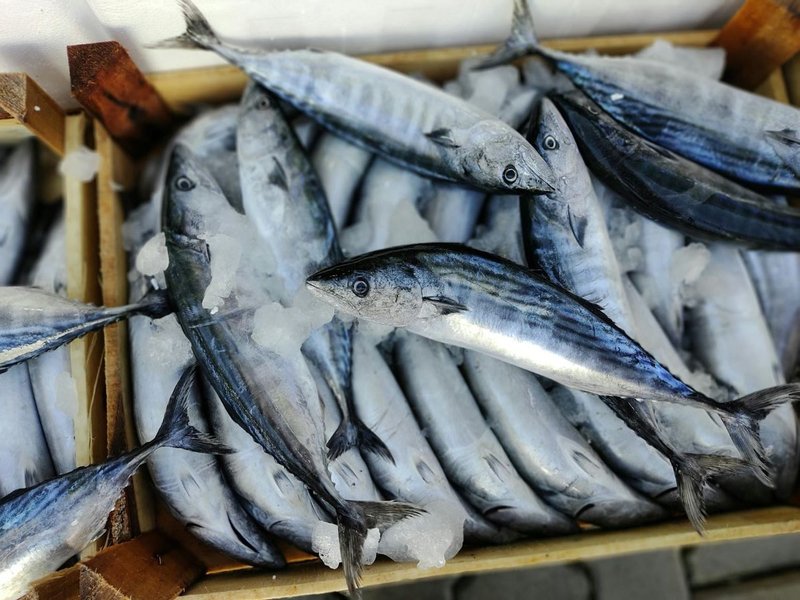What Are Bonito Flakes? The Secret Ingredient of Japanese Cuisine

Bonito flakes – also known as katsuobushi – are an essential part of Japanese cooking and captivate chefs around the world with their unique aroma. But what exactly is katsuobushi? How is it made? And why do bonito flakes seem to move on hot dishes? In this article, we dive deep into the world of katsuobushi and share fascinating insights into its origin, use, and culinary potential.
The Fish Behind the Flakes: What Is Bonito?
Before exploring the production process, it’s worth looking at the base ingredient: bonito. This fish belongs to the mackerel family and is closely related to tuna. In Japan, it’s known as
katsuo
and has played a key role in the cuisine for centuries. Bonito is a fast-swimming predator found in the warm waters of the Pacific and is prized for its firm, flavorful flesh. But how does this fish become the delicate, dancing flakes found on hot dishes?

From Katsuo to Katsuobushi: A Complex Production Process
The transformation of bonito into katsuobushi is a centuries-old tradition that requires precision and patience. First, the fish is filleted and simmered at around 90 °C. This is followed by a time-intensive smoking process: the fillets are smoked up to 15 times over wood (e.g., oak or cherry) for several hours, then dried and rested. At this stage, the product is known as arabushi – smoky, dried, with about 25% residual moisture.
Next comes fermentation. The blocks are inoculated with a mold (typically Aspergillus glaucus ) and sun-dried. This process may be repeated multiple times, resulting in honkarebushi – the hardest and most aromatic form of katsuobushi, known to produce a metallic sound when tapped. The full process – simmering, smoking, fermenting, and drying – creates the hardest and thinnest food product in the world. Finally, the hardened katsuobushi blocks are shaved into delicate flakes using a special wooden plane called a kezuribako . These are the famous bonito flakes.
An Umami Explosion: Why Bonito Flakes Enhance Flavor
This intricate production method not only ensures long shelf life but also delivers an intense dose of umami. Bonito flakes are rich in inosinate, which, when combined with kombu (kelp), creates a powerful synergistic flavor – the foundation of the famous dashi broth. This clear stock is a cornerstone of Japanese cooking, used in everything from miso soup to ramen. The result is a deep, layered taste that requires very little salt – a pure umami powerhouse.
You can experience this flavor depth in our Fusion Restaurant in Berlin , where finely tuned dishes are paired with beverages that highlight every nuance. A refined tea in our tea restaurant can harmoniously underline the subtle umami notes of your meal.
Why Do Bonito Flakes Move?
Bonito flakes often appear to dance on hot dishes. This is due to their paper-thin texture: even the slightest air current or rising steam sets them in motion. This mesmerizing effect adds not only flavor but also a striking visual highlight to your plate.
Bonito Flakes in Japanese Cuisine
Beyond their use in broth, bonito flakes are incredibly versatile. They serve as a flavorful topping, infusing warm dishes with smokiness and umami. Whether sprinkled on okonomiyaki (Japanese savory pancakes), takoyaki (octopus balls), or steamed vegetables – their delicate motion and rich aroma elevate any dish.

Recipes & Uses: Bonito Flakes
More and more chefs outside Japan are embracing bonito flakes. They work not only in traditional recipes but also in modern fusion cuisine. Here are some culinary ideas:
Homemade Dashi Broth – A Classic Recipe with Katsuobushi
Ingredients:
- 1 liter of water
- 10 g dried kombu
- 20 g bonito flakes
Instructions:
- Soak kombu in cold water and heat slowly until just before boiling.
- Remove kombu as soon as small bubbles form.
- Bring the water to a boil, then remove from heat and add bonito flakes.
- Let steep for 1–2 minutes until flakes sink to the bottom.
- Strain through a fine sieve or cloth – your clear, aromatic dashi is ready.
This ichiban dashi serves as the base for miso soup, soba, or udon. Reboiling the same ingredients yields a milder niban dashi , perfect for vegetable dishes and stews.

More Culinary Ideas with Bonito Flakes
Bonito flakes offer endless inspiration in the kitchen – from traditional staples to bold new fusions:
Toppings & Aromatics
- Okonomiyaki & Takoyaki: Sprinkle directly onto hot dishes and enjoy the signature “dance.”
- Onigiri (Rice Balls): Okaka is a bonito-soy sauce mixture used as a flavorful filling.
- Salads & Tofu: Pair with sesame, soy sauce, and lemon juice for an umami-rich dressing.
Fusion Cuisine & Snacks
- Popcorn or Roasted Nuts: Season with bonito flakes and sesame – surprisingly delicious!
- Pasta & Bowls: Sprinkle flakes over your pasta or rice bowl – little salt, big flavor.
Bonito flakes shine in fine dining settings where subtle textures and complex flavors merge. If you enjoy Asian Fine Dining , our Open Minded Cuisine at Dae Mon offers dishes that find harmony with a perfectly paired glass of wine in our wine restaurant .